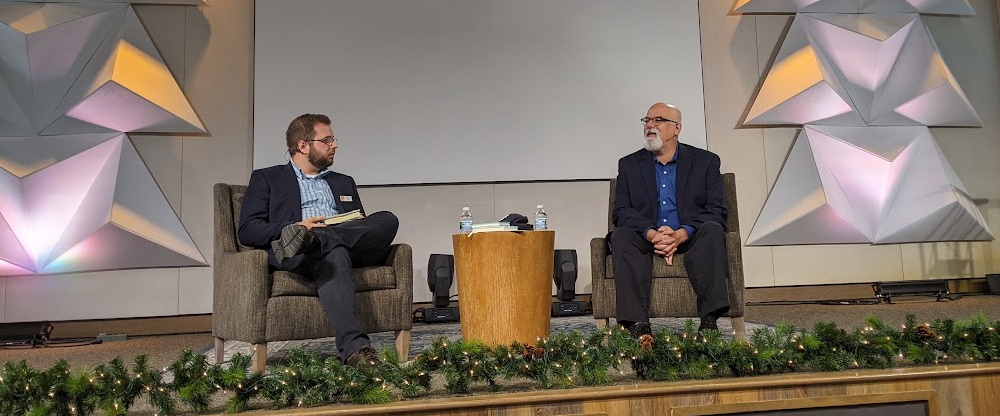By Gordon Govier –
Before COVID, the average church size in America was 137 people. Today it’s 65, according to veteran religion writer Bob Smietana, who shared some thoughts about the future of the American church in an UpperHouse forum, Friday, November 18, 2022. Smietana has been one of the top religion reporters in the country for over two decades and is currently National Reporter for the Religion News Service.
Smietana’s book, Reorganized Religion – The Reshaping of the American Church and Why it Matters, just out in August, provided the focus for the forum, which attracted a diverse group of about 45 people. At my table alone there was a Unitarian, ELCA Lutherans, and evangelicals.
With the polarization evident in the recent election fresh in everyone’s mind, unrelenting change is part of the earthquake shaking institutional religion. Demographics is another: too many old people and not enough young people.
Some churches are adapting but many churches are not responding well to these pressures. Smietana is saddened when he sees churches getting caught up in the cultural clashes of our society because they have so much more to offer that the world needs right now.
“Churches know how to help people find meaning in life,” he said. “They know how to resolve differences and adapt to new cultures. They help people find forgiveness and just as important—how to make amends for what we have done wrong. They know how to channel belief into action. People are counting on your, don’t let them down.”
Reacting to Smietana’s remarks, as part of the forum, were Christopher James, a University of Dubuque Seminary professor and director of the Dane Churches Project; and Kerri Parker, Executive Director of the Wisconsin Council of Churches.
James cited one survey showing 40 percent of Madison area residents were religiously unaffiliated. Another survey of attendees at 118 Madison area churches found 30 percent said their churches leaned mostly Democratic, 8 percent said their churches leaned mostly Republican and 32 percent said the two parties were represented at roughly equal numbers. “Madison is an extreme example of what you describe,” he said.
Parker noted that churches that had a missions purpose and an identity thrived during COVID. “Those who decided to wait out COVID didn’t,” she said.
During the Question and Answer period at the end, rural churches were brought up.
“Rural churches are awesome,” Smietana said. “They’re often the one institution still standing in the community. But we also have thousands of churches who have too much building and not enough people.”
He suggested that a good question for churches to ask themselves is not, “How to keep the church going” but rather, “How does God want to see an ongoing witness in our community?”
He cited the example of All Saints Episcopal Church in Smyrna, Tennessee, which had gone through a devastating church split and was on the verge of closing when it was discovered by a thriving local community of Christian Karen immigrants from Myanmar. Finding a new population to serve is one way to keep a church going.
He also noted that it was often church groups which are called in to help when there’s a local disaster or crisis.
“When something bad happens, who do you call?” he asked. “The church knows how to get things done. The world is depending on you. Don’t let the church burn down. Don’t do dumb things.”

